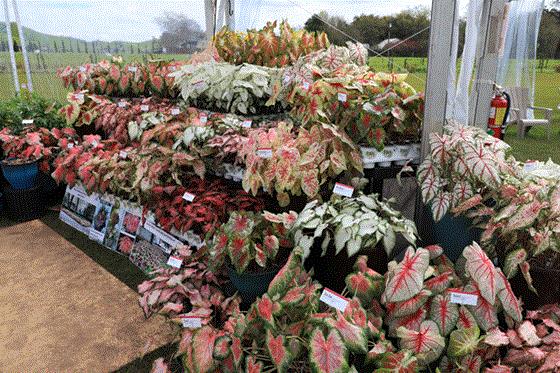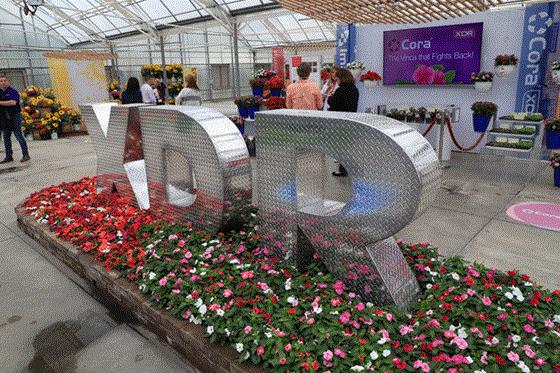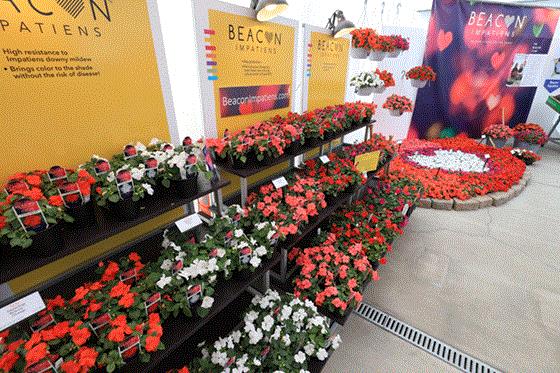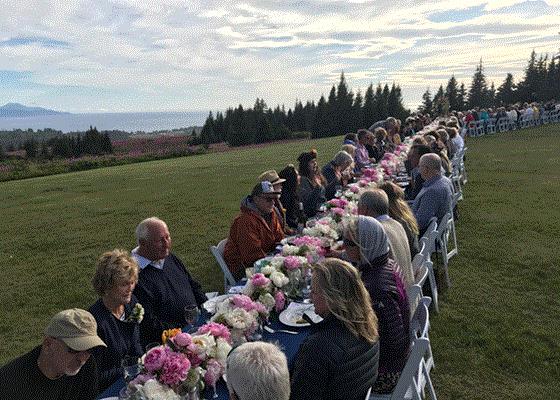Taking a look back
With just a few days of the decade left, and no hard-hitting news coming over the transom to report on, it’s a fine time to take a look back at the highlights from Acres Online circa 2019.
How was the year for your business? Up? Down? Great? Meh? Any big changes or little tweaks worth talking about? Shoot me an email HERE.
As for us at Ball Publishing, it was a solid, successful year, thanks to loyal readers like you, and equally loyal advertisers and sponsors who appreciate what we do and how we do it. We appreciate you, we really do!
Now, for a month-by-month recap of the year that was:
January
The first big news of the year was actually a leftover from 2018—the news that on December 21, Altman Plants had purchased the assets of Color Spot Nursery from Wells Fargo, making Altman by far the largest (by size, anyway) nursery operation in America, with more than 38 million sq. ft. (872 acres) of covered growing space and 3,600 acres of field production. Altman acquired three Color Spot locations in California (Fallbrook, Salinas and Lodi) and five in Texas (Troup, San Antonio, Waco, Walnut Springs and Fort Davis).
One of the questions I asked Ken Altman was how his company avoids the same fate as Color Spot and Hines Horticulture, two nurseries that the industry watched get very big, only to collapse under their own weight.
“First of all, I beg you, don’t put us on the cover of GrowerTalks,” Ken joked. (I had just pointed out to him that both Color Spot and Hines had been featured as cover stories in the past. He’s been there already—the December 2016 issue, so it’s too late.)
Then he got serious.
“We’re going to concentrate on exactly what I told the employees. If we have really good quality plants and we don’t forget where our bread is buttered—which is our customers—and we do everything to make them happy, and if we keep the morale of our company up as one company, that should be good.”
One other note about those other two vs. Altman: They were bank- or private-equity owned. Altman is still 100% family owned.
As of one year later, I’ve gotten no hints that Altman’s isn’t doing exactly as Ken said.
February
February saw one new partnership announced, that of Proven Winners picking up a line of caladiums from Florida’s Classic Caladiums, further expanding Proven Winners’ offerings from the vegetative annuals they started out with some 25 years ago. They showed off some of Classic’s “best, most unique” varieties several weeks later at the California Spring Trials.

Also in February, I bragged about being featured in one of Peter Seabrook’s weekly podcasts, “This Week in the Garden,” talking about the state of American gardening. Peter, if you don’t know, has had a 60-plus year career in all aspects of the English horticulture industry and is as iconic a garden luminary as there is.
March
Speaking of Spring Trials, they took place March 23-28. The biggest news was the official launches of the industry’s two impatiens downy mildew-resistant impatiens varieties: Beacon, from PanAmerican Seed, and Imara XDR, from Syngenta Flowers. The two launches were not surprises, however, as I’d been covering the development of both breakthrough varieties for months. In fact, Beacon made the cover of GrowerTalks in March 2018 before it was even named. But that in no way lessens the importance of these two varieties to the industry, which lost an estimated 40% or more of worldwide impatiens sales to the disease. Imara was launched globally, while Beacon was only being released in select IDM-impacted markets such as Florida and the East Coast, the UK, South Africa and Australia. It will see a full global rollout in 2020.


We didn’t get a good picture of how the two perform in the landscape until the October GrowerTalks, when managing editor Jen Zurko wrote a cover story about the two varieties’ performance in multiple summer field trials across the U.S. and abroad. You can read that story HERE.
April
Spring 2019 started off pretty solidly, according to my weekly Weekend Sales Survey. The data from April 6-7 revealed a score of 7.2 for the U.S., with Connecticut scoring 8 and New Jersey scoring 9. On reader from New Hampshire even scored their weekend a 10! Of course, enjoying an early spring never seems to pay off—a few weeks later I reported a late-season snowstorm hitting the Midwest. Still, by the time I wrapped up the survey in late June, the U.S. had scored a respectable 7.3 for the season, with Canada just behind at 7.2. (Your gut scores called spring 2019 8.1 and 9.0, proving that growers are optimists at heart.
May
I reported on an acquisition within the foliage industry when LiveTrends Design owner Bisser Georgiev announced the purchase of Plant Marketing, a 20-acre foliage nursery in Mt. Dora, Florida. He renamed the business the Urban Jungle Group.
“We wanted to secure at least a small part of our supply chain,” answered the LiveTrends founder when asked why the innovative design and marketing company would decide to get into production—something Bisser had long sworn he would not do.
“We believe in outsourcing. We have 25 contract growers around the country, it’s working great, and those people will stay in place. But with the booming of the indoor houseplant trend happening out there, we felt like we needed to jump in.” Bisser says his goal is “to create a really attractive, very innovative line of new houseplants.”
I also reported on Mother’s Day, which many of you called “record-breaking. “That in spite of the fact that in many spots is was just a one-day weekend, with a stellar Saturday and a wash-out Sunday (although a fantastic Friday helped make up for it.) The final tally for the holiday? 7.6 in the U.S. and 8.2 in Canada.

June
June marked the start of hempmania in the floriculture industry, as I reported that two major Midwest greenhouses were soon to be converted from bedding plants to hemp. That removed about 5.4 million sq. ft. (124 acres) of greenhouse production—plus lots of accompanying outdoor production space—from the Midwest mass market flower business. The operation in question was ColorPoint, owned by brothers Art and Ken VanWingerden, with locations in Kentucky and Illinois.

ColorPoint’s Paris, Kentucky, location, which Art and Ken built in 2001, merged with AgTech Scientific, a Kentucky firm founded in 2015 to focus on researching CBD as an additive for pet and horse food. The companies have been granted both a Hemp Grower License and Hemp Processor License from the Kentucky Department of Agriculture. Art and Ken will be active partners in the new venture.
ColorPoint’s Granville, Illinois, location (above), which Art and Ken bought from their brother Nick in 2014, has been sold to Red, White & Bloom, an operating division of MichiCann Medical, a private cannabis investment firm based in Ontario, Canada. Red, White & Bloom plans to use the greenhouse as its U.S. anchor, establishing large-scale production capabilities focused on hemp extraction and product manufacturing.
July
The most summery month of summer (in my opinion) featured coverage of the Cultivate trade show, where we learned that Proven Winners has decided to drop out of the California Spring Trials. That was big news, because for years exhibiting companies had weighed the benefits of participating against the very high cost of participating, and Proven Winners was the first big participant to decide that the cost (in both dollars and time) was just too high. Instead, they think there are better ways to reach their target audiences (distributor sales reps, growers and retailers) using print, video and social media tools that are much more available and affordable today than they were in 1997 when John Rader hosted the first Proven Winners trial at EuroAmerican Propagators.
At the time, I wondered if any other major exhibitor would follow suit. So far, no. They’re all signed up for 2020.
I also wrote the backstory to the recent sprengeri fern shortage. Sister company PanAmerican Seed is one of the world’s leading producer of sprengeri seed, and the company has gotten serious about quality and consistency of the open-pollinated crop, which had always been handled pretty nonchalantly. They planted a larger, more structured stock plant plot, and also diversified into different locations, to minimize risk. The plants take two years to grow to seed-producing maturity, and that’s why there’s been shortages. PanAmerican will have some supply back online in 2020 and should be in full supply by 2021.

August
August was a mixed bag of news and travel. I reported on the groundbreaking of the Ball Helix Central R&D Center. Ball Helix is the home of Ball’s lab-coated experts in molecular biology, cell biology, analytical chemistry, pathology and intellectual property, and they’d been doing their amazing work in small, aging labs and greenhouses. This new R&D Center, set to open in early 2021, will rival the best in the world, allowing work on the most cutting-edge technologies available.

Travel-wise, I visited Alaska to attend one of the Certified American Grown Field to Vase dinners, held at Jocelyn Peonies in the town of Homer. I think my pictures showed at least 10,000 words worth of the beauty of the place. I also joined the International Garden Center Association in England for their annual garden center tour. My write-up of that event was for the November Green Profit cover story.
September
Might orange petunias make a comeback? That was the news for September, when I reported that German breeder Westhoff, which saw about 25% of its petunia varieties caught up in the orange gene fiasco, had filed a petition asking APHIS to reverse its decision and allow petunias with the gene to be sold in the U.S. USDA had banned the orange-inducing maize gene two years prior.
You recall the story: A plant biologist noticed an orange petunia in a planter at a train station in Helsinki, Finland. He mentioned it to a friend at the Finnish Board for Gene Technology, and the next thing we know, plant health organizations around the world were banning any petunia that carries this maize gene. (As of this writing, there’s no news as to whether or not USDA will side with Westhoff in the matter.)
On the very last day of September, I reported the pending closing of long-time potted plant grower Bay City Flower Company, as well as the addition of hemp seed production to long-time bedding plant grower N.G. Heimos. The floriculture world, she is a changin’!

October
Dümmen Orange introduced new CEO Hugo Noordhoek Hegt, who replaced Biense Visser, who is retiring January 1 after six years with the company. Hugo, 58, is a Dutch native with a master’s degree in Law from Leiden University. He gained experience in running a multinational business through 17 years with paint and coatings manufacturer Akzo Nobel, including stints in China, Singapore and the U.S. He also has start-up experience with a pair of companies called Fintech Foundry and X-Infex B.V.
I also reported a couple of honors: Simon N. Groot (below), great-great-great grandson of Nanne Groot, the famous Dutch horticulture family’s first recorded seedsman, was awarded the prestigious World Food Prize—known as the “Nobel Prize for Food and Agriculture.” Simon is the founder of East-West Seed, which he started in 1982 in the Philippines. His goal was to breed seeds specifically for poverty-stricken small farmers in the tropics, helping them grow higher-value, more productive, more nutritious crops.

And Micky Byland, senior VP of sales at N.G. Heimos Greenhouses and cofounder of Micky’s Minis Flora Express, was awarded Produce Marketing Association’s 2019 Floral Marketer of the Year Award on Oct. 18 at PMA’s Fresh Summit Convention & Expo in Anaheim, California.
November
Your glass and polycarbonate greenhouse glazing was saved by diligent action by the National Greenhouse Manufacturer’s Association. The group, which represents greenhouse structure and equipment manufacturers, was monitoring a proposed change to the International Energy Code (IEC) that would have required non-opaque greenhouse coverings to meet a minimum U (thermal transmittance) value of 0.7 BTU/hr. per sq. ft. That’s equivalent to what a double poly roof offers, and would basically have outlawed glass, polycarbonate (even twin-wall) and single poly on any commercial greenhouse where the IEC is enforced.
Thankfully, NGMA members Matt Stuppy and Paul Jacobson were on hand at the International Code Council hearing in Las Vegas in late October to publicly comment and fight to keep the greenhouse exemption, and were victorious.
December
Wrapping up 2019 was more Spring Trials news, namely that long-time Trials host GroLink would no longer offer up their greenhouses for the event. That left about a dozen companies scrambling for new host homes for the event (you can keep up with all the musical chairs at our website, www.springtrials.com).
Of course, I wrote a lot about poinsettias, including painted ones (which I love but many of you hate). I reported some current challenges facing the cannabis and hemp markets. And I shared the happy news that Nature’s Source Plant Food, which was closed down back in September, has a new owner after all.
Looking back, it was a solid year, with no real earthquakes, shakeups or shakeouts. Of course, that’s my perspective from high atop Ball Publishing Tower. Those of you fighting the good fight in trenches week in and week out know much better than me how 2019 was for you. If you care to share war stories of battles fought and won … or maybe battle scars nobly earned, send a note to beytes@growertalks.com.
And now, just one more email for 2019: the River Ridge Holiday Greens Report. Watch your inbox!







See you next time,

Chris Beytes
Editor
GrowerTalks and Green Profit
This e-mail received by 21,414 loyal readers!
Thanks to my loyal sponsors, who help me reach the 21,414 readers of Acres Online in 66 countries. Want to be one of them (a sponsor, that is)? Give Paul Black a shout and he'll hook you up.